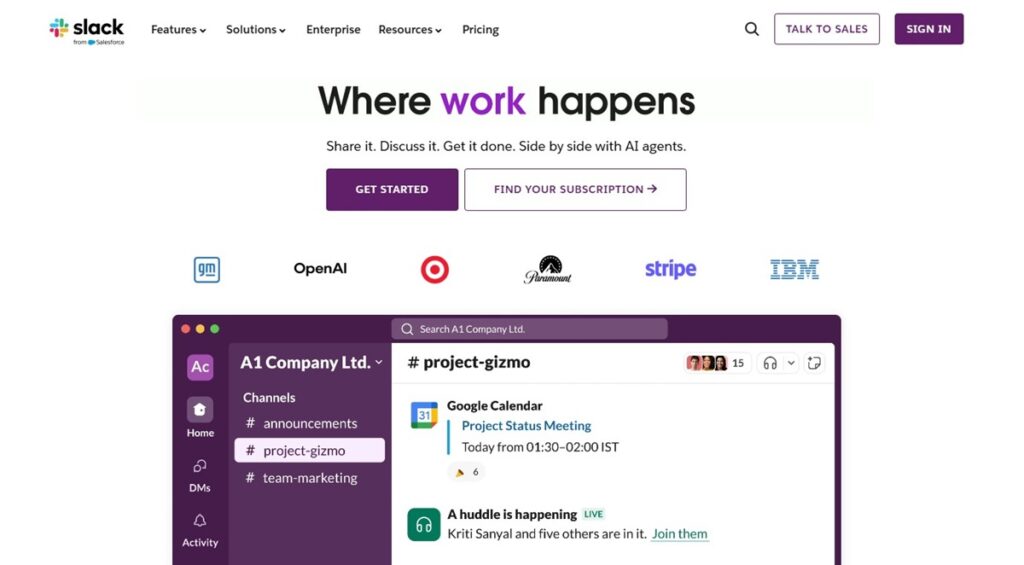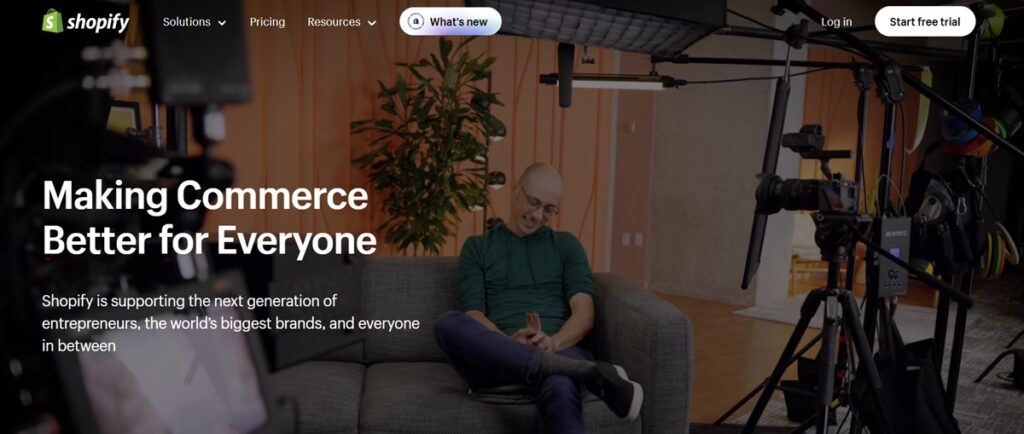Let’s be honest—B2B SaaS isn’t exactly the world’s most glamorous topic. But if you’re in tech or business in 2025, it’s pretty much everywhere you look. From that marketing tool your team can’t live without to the accounting software that runs in the background, B2B SaaS is the backbone for thousands of modern companies.
But what actually sets B2B SaaS apart? How do these businesses make money, keep customers happy, and—most importantly—grow? In this guide, I’ll break down the nuts and bolts, share some hard numbers, and walk through strategies that actually work. No fluff, just the real deal.
What Is B2B SaaS?
B2B SaaS just means software made for businesses, not your aunt binge-watching Netflix. It’s stuff like Salesforce, Slack, or HubSpot—tools companies actually use to get work done. And instead of buying it once and installing from a dusty CD, you just pay a monthly fee and use it online.
That setup works great for both sides. Companies get constant updates without waiting years. And the folks building the software? They get recurring revenue that doesn’t vanish after a one-time sale. Everybody wins.
How B2B SaaS Works: The Business Model
B2B SaaS sounds fancy, but the idea’s dead simple: build something useful for businesses, charge them monthly or yearly, and keep them around as long as you can.
Now here’s the catch—this isn’t a one-and-done deal. SaaS runs on recurring revenue. If a customer walks away, that income disappears fast. But if you keep them happy? That same customer might stick around for 5–10 years and pay you every single month.
Most SaaS companies use tiered pricing. Free for small teams. Mid-tier for those starting to grow. And a high-end plan for companies with deep pockets. It’s all about getting your foot in the door and earning more as your users scale.
Key Trends Shaping B2B SaaS in 2025
If you think B2B SaaS in 2025 looks like it did in 2020, you haven’t been paying attention. Things are moving fast—and the game’s changing.
AI is baked in now. A McKinsey report from 2023 says over 60% of SaaS tools now come with AI features built-in. That’s not hype—it’s real. Smarter automations, better insights, and tools that adapt to how people actually use them.
Vertical SaaS is blowing up. Instead of trying to serve everyone, more companies are going deep on specific industries—like law firms or dental clinics. When you solve one group’s exact pain points, you can charge more and stand out fast.
Usage-based pricing is catching on. Flat fees are fading. More tools are charging based on how much you use. Feels fair. Helps conversions. Keeps customers honest.
Remote work isn’t going anywhere. Hybrid teams are the new normal, and they need tools that help them stay on the same page. That means collaboration and productivity software is still booming.
Top Challenges B2B SaaS Companies Face
Running a B2B SaaS business isn’t all sunshine and recurring revenue. There are real hurdles—some that trip up even the best teams.
Churn: Losing customers hurts. According to Userpilot, the average churn rate for SaaS is around 5%. Companies that don’t keep churn in check see growth stall fast.
Long Sales Cycles: Unlike B2C, closing a B2B deal can take months (or longer). You’re often selling to teams, not individuals, which means more demos, more questions, and a lot more “let’s circle back.”
Complex Integrations: Businesses rarely use just one tool. Integrating with other software is a must—and it’s rarely as plug-and-play as the marketing promises.
What works? Proactive customer success, transparent onboarding, and investing in integrations that actually work (not just marketing buzzwords). Oh, and maybe a little patience.
Real-World Examples of Successful B2B SaaS Companies
It’s one thing to talk theory. Let’s look at some real companies crushing it in the B2B SaaS world.
1. Salesforce

The poster child for B2B SaaS. They practically invented the “cloud CRM” and have grown to over $31 billion in annual revenue (2023). Their secret? Constant innovation and a relentless focus on enterprise customers.
2. Slack

What started as a side project turned into the go-to communication tool for millions of teams. Their viral, product-led approach made onboarding simple and addictive.
3. Shopify

While known for powering online stores, Shopify’s B2B tools help wholesalers and manufacturers manage orders, inventory, and payments—all from a single dashboard.
4. Zoom

Remember 2020? Enough said. Zoom went from niche business tool to global necessity, proving that reliability and ease of use still trump fancy features.
These are the examples of best ones but the list is much bigger. Feel free to check out the complete list of the best SaaS tools.
Growth Strategies for B2B SaaS in 2025
Let’s get tactical. Here’s how successful B2B SaaS companies grow in 2025, with real-world tactics that cut through the noise.
1. Pricing Models
The days of “one price fits all” are long gone. Modern B2B SaaS companies use a mix of:
- Tiered Pricing: Different plans for different company sizes or needs.
- Usage-Based Pricing: Pay per seat, gigabyte, API call—you name it.
- Freemium: Offer a free version, then upsell power users.
Take Twilio, for example. Their usage-based pricing helped them scale quickly, as customers only paid for what they used—removing the “commitment anxiety” that kills so many deals.
2. Customer Acquisition
There’s no silver bullet, but a few strategies stand out:
- Content Marketing: HubSpot practically wrote the playbook here, using free guides and tools to attract prospects.
- Free Trials: Give customers a taste before they buy.
- Referrals: Turn happy users into your best salespeople.
Companies with a strong inbound marketing engine see faster growth than those relying solely on outbound sales.
3. Customer Retention
Acquiring new customers is expensive. Keeping existing ones? That’s where profits live.
- Onboarding: Make sure new users see value fast. Intercom found that users who complete onboarding are 9x more likely to stick around.
- Customer Success: Proactively reach out to accounts at risk of churning. Sometimes a quick call can make all the difference.
- Feedback Loops: Regularly ask for feedback, then actually act on it.
4. Product-Led Growth
Let your product do the selling. Dropbox and Slack both nailed this—users invite teammates, and suddenly you’ve got a whole company hooked before the sales team even calls.
According to Bain’s Technology Report 2023, product-led companies grow 2x faster than those using traditional sales-heavy models. The lesson? Build a product that’s addictively easy to use, and let word of mouth do the rest.
Essential Metrics Every B2B SaaS Company Should Track
If you’re not tracking the right numbers, you’re flying blind. Here’s what actually matters:
- MRR (Monthly Recurring Revenue): Your monthly recurring revenue. This is your pulse. Don’t lose it.
- ARR (Annual Recurring Revenue): Same thing, zoomed out over a year. Good for board slides.
- Churn Rate: How many customers (or dollars) you’re losing each month. Keep it low or you’ll bleed out.
- CAC (Customer Acquisition Cost): What it costs to get a new customer. Too high? You’ve got a problem.
- LTV (Lifetime Value): How much that customer’s worth over time. This needs to beat CAC by a mile.
- NPS (Net Promoter Score): Are people happy enough to tell their friends? If not, why?
These aren’t just “nice to know” stats. They help you catch fires early—like churn creeping up or your cost per customer getting out of hand. Watch them like a hawk.
Feel free to check out my in-depth articles on essential SaaS metrics and KPIs to learn more about tracking important numbers for your SaaS.
The Future of B2B SaaS: Opportunities in 2025 and Beyond
So what’s coming next? B2B SaaS in 2025 is getting sharper, faster, and way more focused.
AI isn’t slowing down. Expect more smart automations, better suggestions, and tools that flag issues before you even see them. Predictive everything.
Vertical SaaS keeps winning. Generic tools won’t cut it. Teams want software built for their world—and they’ll pay for it.
Security’s a dealbreaker now. With more data floating in the cloud, no one’s taking chances. If you can’t show customers their info’s safe, you’re out of the running—especially with big companies.
Oh, and the pie’s getting bigger. Fortune Business Insights says SaaS is headed for $1.1 trillion by 2032. There’s room to build. Question is—will you?
Ready to Take Your B2B SaaS Business to the Next Level?
Doesn’t matter if you’re just getting started or already scaling—same fundamentals apply: build something useful, keep people around, and track what’s working (and what’s not).
Things move quick in B2B SaaS. 2025 won’t wait for you to catch up. If anything in here gave you an “aha” moment, pass it on to your team—or stash it for your next planning sprint.
Final Thoughts
B2B SaaS doesn’t always grab headlines—but it’s behind the scenes of nearly every serious business out there. Nail the model, avoid the common traps, and you’re playing in the same league as some of the biggest wins of the last 10 years.
The playbook’s simple: solve real problems, deliver value, test what works. That’s how you stay relevant—not just in 2025, but for the long haul.
